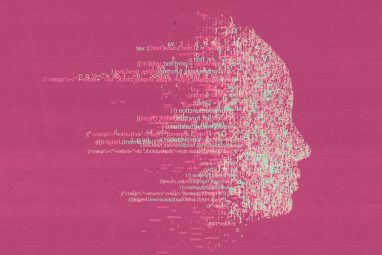Serve More Customers With Inclusive Product Design
Use these questions to empower teams to design products for more diverse populations.
News
- Will Halt Potential Rogue AI Systems, Says Microsoft AI Chief
- Google Bets Big on Data Infra With a $4.75B Deal in Intersect
- OpenAI Softens ChatGPT’s Tone While Scaling for an AI Showdown
- UAE President Meets Musk to Discuss AI and Cross-Border Collaboration
- UAE Forms National Media Authority to Centralize Media Oversight
- TikTok Strikes US Sale Deal With Oracle, Silver Lake, and UAE’s MGX

Sjoerd van Leeuwen/theispot.com
Imagine a product that millions of people find frustrating to use because of a design choice that could have easily been avoided. If it were your product, wouldn’t you want to know who was frustrated by it and why, how to fix the problem, and how your organization could avoid making similar mistakes in the future?
Obviously, letting a customer down is bad for business. Yet some products do this every day, unintentionally.
Consider, for instance, how marketers and designers use color to create a distinct visual identity for their products and brands. Decisions about color are often based on the expectation that all users can see the colors that are chosen. But such an assumption might unintentionally exclude colorblind users, who account for 8% of the global population. Recognizing the importance of designing for accessibility, Adobe Color provides accessibility tools that enable designers to select hues directly from the color wheel at the start of the design process, helping them to avoid issues later.
Businesses have an opportunity — and a responsibility — to widen their lenses when considering whom their products are designed for. Inclusive product design aims to facilitate a match between the product and a diverse set of users, which can cultivate wins for the business, customers, and society in the process. Even small acts of attentiveness can yield significant results by making products usable by a larger population.
Addressing User Diversity
Inclusive product design starts by understanding and considering the many dimensions of identity. Recent research, by Vanessa Patrick and Candice Hollenbeck, published in the Journal of Consumer Psychology, has introduced psychologist Pamela Hays’s ADDRESSING framework of sociocultural identity to the field of marketing. The factors on which the acronym is based — Age, Developmental and acquired Disabilities, Religion/spirituality, Ethnic/racial identity, Socioeconomic status, Sexual orientation, Indigenous heritage, National origin, and Gender — can help product teams discern underrepresented groups across the spectrum of identities.
Even companies that recognize the importance of inclusive product design might find themselves unsure about how to approach this work when faced with constraints and competing priorities. Using the ADDRESSING framework, we highlight four sets of questions that you can pose to expand the lens through which to view your product’s target market, build an inclusive product development process, and develop inclusive innovations.
Questions to ask to include edge users in your target market. How well are we as an organization meeting the whole spectrum of needs of our target market? Are we unintentionally overlooking user groups whose needs we can (profitably) meet? Do we know whom we are excluding?
Apple found that speech recognition technology performed much worse when used by people who stutter and thus that population used such technology at a much lower rate than the general population. Using recorded speech data from users with speech impediments, Apple improved how its products worked for them.
Another example of meeting a previously unrecognized customer need involves transgender and nonbinary individuals, who often encounter excessive scrutiny and potential embarrassment when using credit or debit cards that don’t reflect their identity. In 2019, Mastercard introduced the True Name feature, which allows consumers to display their chosen name on their card, even if they haven’t legally changed their name.
Modern product development processes often focus on addressing the needs of the typical or average user, which can be too narrow a view. Companies can use surveys, customer reviews, and usage and performance data to identify differences in how well their products address the needs of specific populations.
Questions to ask to embed inclusive processes. Do we include underrepresented and historically marginalized individuals throughout our product development and design process? Can we adapt our existing products, or do we need to build new products to support inclusion?
When the needs of edge consumers can’t be adequately met by existing products, companies can create new, inclusive offerings that center their needs. For example, in 2018, after having released several iterations of the Xbox controller, Microsoft’s Xbox team developed a new model for gamers with limited mobility. It worked in close consultation with the disability community by testing prototypes with occupational therapists and listening to people in the gaming community who had accessibility needs. What resulted is a controller with a modular design that can be used with customizable accessories (joysticks, mounts, and buttons) and enables all users, regardless of physical ability, to experience the joy of gaming.
Centering on the most marginalized users in the product development process can create benefits for all customers, who often exceed the expectations of the remainder of the target market. Consider Nike’s GO FlyEase hands-free shoes, which were inspired by a customer with cerebral palsy and designed in consultation with amputees to be easy to put on. The slip-on sneakers also benefit customers experiencing a temporary disability, such as a broken arm, and people whose hands are situationally unavailable, whether holding groceries, carrying a baby, or clutching a dog leash. Solving for mismatches created by a disability can also solve for other mismatches. For example, sidewalk curb cuts enhance the mobility of not only wheelchair users but also people pushing strollers, pulling grocery carts, or riding scooters.
To consider another kind of mismatch, products developed with artificial intelligence have suffered due to the underrepresentation of Native Americans in the training data. For instance, image recognition software has been shown to misidentify elements of Native American culture, and a popular AI image generator has been found to underrepresent Indigenous people. These examples demonstrate the potential downsides when historically marginalized communities are not included in data sets upon which algorithms are trained or in the evaluation of the algorithm’s performance. In an effort to build algorithms with and for a broader set of users, Google’s responsible AI practices involve assessing fairness in data sets and AI outcomes across different subgroups.
Bolting on accessibility or inclusion features to an existing product late in its life cycle can lead to a suboptimal user experience, increased development and marketing costs, and missed opportunities to delight customers. A user who struggles with a product on their first try might never return to discover the accessibility features that were added in a later iteration.
Questions to ask to build a diverse product team. Do we have hiring processes in place to ensure that we reach and recruit diverse talent that represents the market? Do we have a culture of belonging and psychological safety so that diverse perspectives are voiced and respected?
Asking whether your team reflects the diversity of the market can help you embed diverse perspectives throughout the development process.
Companies can facilitate a more inclusive product development process when they hire employees across a range of identities. Sumaira (Sam) Latif, who is blind, has been with Procter & Gamble for more than two decades. As a special consultant for inclusive design, she worked with the Herbal Essence team to create a new packaging design that features tactile indentations to help vision-impaired individuals differentiate the shampoo bottle from the conditioner bottle. This not only benefits those with vision impairments but all who struggle with identifying the product they need to use in the shower.
Building inclusive products requires that organizations have not only windows into the needs of diverse users but also mirrors in which the teams themselves reflect the diversity of the market. Checking your “windows” and “mirrors” allows you to invent on behalf of a broader set of customers and cocreate meaningful innovations that impact their lives. For instance, Snap collects and reports not only gender, race, and ethnicity of its employees but also how many employees are neurodivergent, live with a physical disability, are members of the LGBTQ+ community, are first-generation college graduates, or have served in the military. Having a product design team with the lived experience of marginalization has resulted in Snap launching new product features like the Inclusive Camera, which better captures skin tones. That benefits everyone, particularly users with darker skin tones, who have historically been poorly served by camera-based apps.
Questions to ask to prioritize inclusion. Which inclusion features should we prioritize? Are our estimates of the impact of inclusive products biased? Can we test hypotheses about the ROI of prioritizing inclusion?
A product team will pursue development of features that broaden the customer base only if the return on such an investment is expected to be high. As a result, features that improve accessibility and inclusivity are often seen as nice-to-haves rather than must-haves during the development process.
This deprioritization of accessibility and inclusion might not be consistent with what is best for a company. Recent research, by Jeffrey Shulman and Zheyin (Jane) Gu, published in Marketing Science, has shown how research bias can lead companies to systematically under- or overinvest in developing inclusive products. Doubts about the impact of inclusion can also be self-reinforcing: Users from certain populations might not use a product because it was not originally designed for them, and therefore they might not respond to iterative improvements that are designed with them in mind. To interrupt this cycle, it is important to validate the potential impact of inclusive products by conducting a more comprehensive test.
Leaders can overcome resistance to prioritizing inclusive product design by applying standard process improvement methodologies, such as Six Sigma’s DMAIC, to identify and demonstrate the impact of inclusion initiatives on key success metrics. Well-defined pilot projects can help a team analyze how intentionally engaging diverse communities of users will affect product development, including time and financial costs and product performance.
To provide expertise and guidance for product teams seeking to build more inclusive products, several companies are creating specific roles dedicated to product accessibility or inclusion. For instance, ADP has hired a chief of product inclusion and Microsoft a chief inclusion officer. Product equity teams are in place at Airbnb, Google, LinkedIn, Meta, and Snap.
As a leader, you have an opportunity to utilize the four sets of questions outlined above to uncover lucrative business opportunities that can have a positive impact on people and society. Inclusive product design is not just the responsibility of product designers, user experience researchers, engineers, or product managers. Leaders can nurture change by creating organizational goals around product inclusion and encouraging each team to establish success metrics and initiatives that support these goals.








